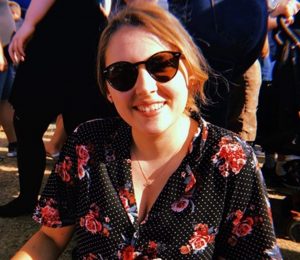
It’s easy to summarise Birmingham in just a few words; industrial, chocolate, and Peaky Blinders; and to say this you would not be incorrect. But Birmingham is the city that generations of my family have called home, and I will not tolerate people reducing it to such generalisations. This was partly my motivation when I applied for a position as an Undergraduate Research Scholar on the project, Selly Oak Activism, coordinated by Dr Chris Moores this summer. Our shared goal was to explore the turbulent, and sometimes scandalous, history of the area that we, as students, so often take for granted.
My first task on the job involved traipsing through hundreds of Redbrick editions that had been usefully indexed a year before by predecessor, Bryony. Although I’ve never met her, and I’m not sure if I ever will, I hope that one day I can express my thanks and appreciation in person for the work she did (so I didn’t have to). Some people might think that spending hours on Excel scrolling through a list of 1500 articles would be boring – but you haven’t seen this index. Did you know that in 1962, two Chemical Engineering students rode a tandem bicycle, equipped with floats, across the English Channel for charity? Or that in the same year the university’s Debating Society began their war on fascism when the leader of the Union Movement, Max Mosley, was invited to speak? Or that in January 1964 the Birmingham Carnival held a cycling race hosted by none other than Jimmy Savile? It’s amazing what you can learn just from delving into some old student newspapers.
My research wasn’t all fun and games though. For days on end I barricaded myself in archives throughout the West Midlands, researching various individuals and groups who have had an impact on Selly Oak and its surrounding areas over the years. As historians, we never want anyone to slip through history unnoticed, and that’s why it was so refreshing for me to see that even the most fleeting of characters made their mark on the area. Tom Litterick, the Labour MP for Selly Oak between 1974 and 1979 was someone I took a particular interest in. Throughout his time in office he was widely known to be a good man, who fought to help improve the conditions of houses in the area, coincidentally which many students now inhabit. The Birmingham Community Development Project, which ran from 1972 till 1976, was another one of those groups that greatly influenced the city and its residents, providing aid to families in otherwise financial ruin. So much work has gone into sustaining our community over the years, and I’m glad that this project has enabled me to shed some light on the individuals who kept our city on its feet.
I can only hope that my five weeks of work will pay off in the long run. Certainly for me, the experience has been one of the most rewarding of my academic career, and I will surely not forget the skills and lessons it has taught me. But my main hope when taking on this position was that Birmingham, and its rich history, would be able to get the exposure it deserves, so we can stop labelling it simply as the city where Dairy Milk came to life, and start crediting the activists who helped mould it into what it is today.
Holly Pittaway, BA History
To find our more about the Selly Oak Activist project check out their blog and follow the project on Twitter, @ActivistSelly. You can read Bryony’s post about working on the Selly Oak Activism UGRS project in 2017 here.
